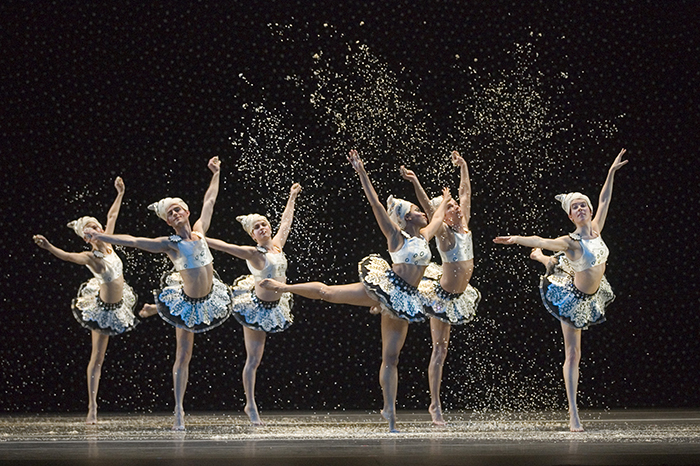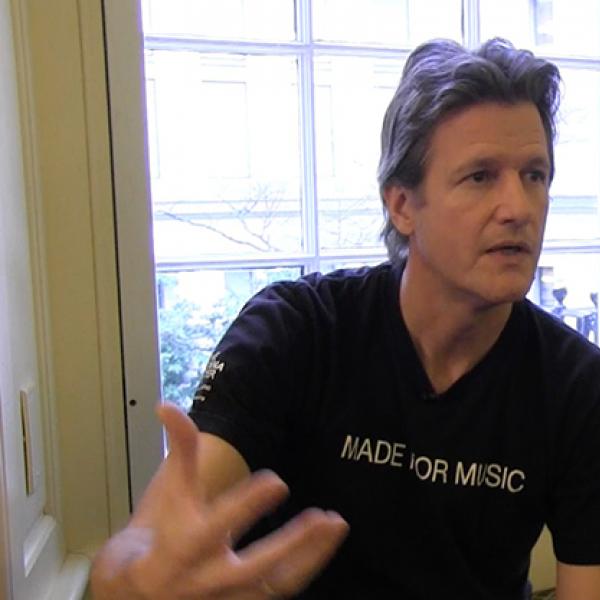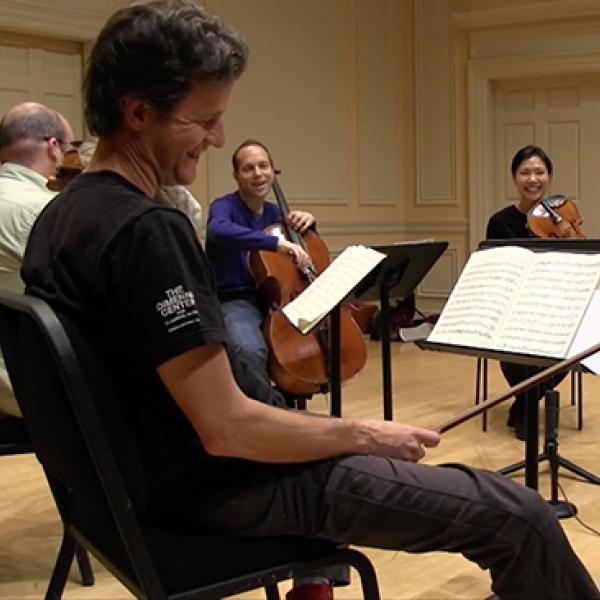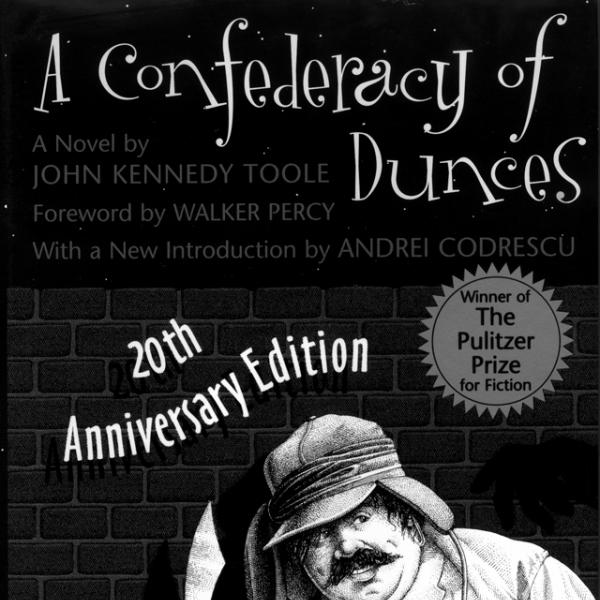Sarah Kaufman

For an artist, few things can seem more devastating than a poor review. They can sway public opinion, sometimes to the extent that people will avoid reading a book, attending an exhibit, or buying tickets to a performance. But if art critics hold such tremendous power in their pens, how do they know when to wield it? What does failure or success look like to the trained eye? Sarah Kaufman has been the dance critic for the Washington Post since 1996, and snagged a Pulitzer Prize for Criticism in 2010. In the fall, she’ll publish her first book, The Art of Grace, which will look at the concept of grace in the arts, in the body, and within social interactions. We recently spoke with her about failure on the page, on the stage, and why sometimes it pays to look at failure through the long view of history.
Failure on the Page
An interesting opinion that some people hold [is] that dance criticism itself, in some circumstances, is a failure. In her book, Critical Gestures: Writings on Dance and Culture, author Ann Daly says, “Dance criticism is always a knowing act of failure, a futile effort to suggest with words what the body offers.” Daly also posits that dance “confounds the linear parade of words.” I disagree. Dance criticism, like any other type of arts criticism, is about using one art form to interpret another. You’re using words to investigate, explore, engage with, and analyze another piece of art.
That said, it’s true that dance is not necessarily something that prompts people to think in language. It’s pre-language. It’s deeper. How do you capture the essence of it when the experience is emotional and visceral? One reason dance criticism is appreciated is because it is so hard to articulate, even to yourself, what moved you about a performance or what didn’t move you.
Ultimately, how you capture dance in words is part of the gymnastics of dance criticism. I face that every time I sit down to write. But because I speak the language of dance writing fluently, I’m confident that thoughts and feelings will pop up while I’m watching that I can then shape into a good review.
There’s a trust with the readers of the Washington Post or any other outlet. They look for your review. They want to know your take on it, and you have to provide that. If you fail to provide the review, that’s a breach of trust. So I don’t think there is any inherent act of failure in chronicling dance. The failure would be not to write about it. Then we would all lose one means by which dance does not disappear.
Failure on the Stage
As for what failure looks like on stage, there are many shades of gray. I love to see a bold effort even if what is created isn’t a seamless product.
I would say the worst type of failure is boredom. If a work is aimless, if the intent seems to be to frustrate the audience, if it doesn’t feel honest—those pieces are going to be problematic for me. But, I don’t see that very often. Every now and then something comes around that feels like it needs more time in the cooker and more feedback.
And then there is the topic of dance editors. I do think choreography can benefit from an editor, from an outside perspective. Just bring someone in, show it to them, and get a true opinion. It would be up to the individual choreographer who those people would be. I’m imagining you have a friend who’s a theater director and can really chart whether a dance’s emotional moments are landing. Is there something true and living in what’s happening or is it just a bunch of frill?
Patience
I’m a big advocate of patience. You have to have a lot of patience to be a dance critic for this long. The communication between artists and audience is both direct and subtle. You can’t go to it expecting a performance to be like a Broadway show where it’s clear which are the funny points, the dramatic points, and the tearjerker points. I rely on my own sense of patience a lot in terms of waiting to see what will unfold within a piece.
But then there is failure, longer-term, within the context of history. The Nutcracker of all things was a failure when it first came out in 1892. The composer Pyotr Ilyich Tchaikovsky thought it was a complete bore, far worse than The Sleeping Beauty. The choreographer Marius Petipa became ill in the midst of its creation so somebody else had to take over for him. The audience didn’t love it and it wasn’t performed for years after that. What does that say about failure?
Look at Vaslav Nijinsky’s The Rite of Spring. That’s probably the quintessential failure, such a failure it disappeared. We like to think it disappeared because it was so radical and the audience couldn’t take it, but maybe it was just a bad piece. We don’t know.
Merce Cunningham’s dancers were pelted with tomatoes and worse when they went around Europe in the 1960s. And more recently when his company performed Sound Dance at Wolf Trap shortly before he died, people were still getting angry. Lights flashed into the audience. David Tudor’s composition felt like a roaring cyclone with machine gun fire. Loud and angry. And yet, I found it exhilarating. So is it a failure?
On Broadway, look at the December decision to close Side Show. I found that show so moving, so engrossing. This is another occasion when patience should come in. There’s an expectation with a Broadway musical that it’s going to be razzmatazz and funny. But if it deals with real life, the dark side of the soul, people may love it when they see it but they may not buy the ticket in the first place.
Little Dancer that premiered at the Kennedy Center is another show that dealt with some tough topics, showcased a shadowy, seamy side of society, and yet it also clarified a complex situation. Who knows what the future of that show will be? But it goes to this idea of being able to wait until an artist can really unfold their intentions both within a piece and even across the life of that artist.

Courage and History
There is something to failure that isn’t entirely bad. You can have an interesting failure that is bold and distinct but perhaps doesn’t gel, but the work sticks with you. You turn it over in your mind afterwards. In those instances, at least someone had the intent and courage to persevere and get something on stage. Intention and courage are good things.
I look at somebody like Mark Morris. There are some works of his that I like better than others, that move me more than others, but I always feel he’s being honest, no moments that are just glossy or cheap. That works with writing too. You want to express your honest opinion, your honest feelings.
You can talk about failure in so many ways. I do think one failure is with dance leadership in jettisoning its history, not investigating and not bringing forward more interesting pieces from the past. There’s just so much richness. Now, there’s such a drive toward premieres. You have to have premieres in your program. You have to have premieres in your season. Dance is a fragile art form and there’s not a good way to preserve it but continually dancing it is the best way.
Just looking in the American canon, I’m thinking about pieces by the Christensen Brothers. Ballet West was in Washington in December with Willam Christensen’s The Nutcracker. I noted in my review that one needs to go see an older piece like that with a different set of expectations, a little bit of patience. We all like vintage things. They’re a little more finely crafted, perhaps, not so glitzy. There are different qualities that you appreciate. Why can’t we appreciate that on the stage as well? Outside of America, there are choreographers like Léonide Massine—where has his work gone? He was a huge star. Or Bronislava Nijinska. So that is an area I’d love to see some of the leadership tackle.
Vulnerability and Humility
We’re all drawn to vulnerability. Psychologists call it the Pratfall Effect, which means when you fall, you stumble, you slip on a banana peel, you make a fool of yourself, that can be the moment that most moves people. You don’t want to be considered a failure, or to have a string of failures. But we can appreciate seeing someone strive, make that leap of faith.
And sometimes when you go for something and it doesn’t all completely come together, still that effort has real meaning for people. Look at Jennifer Lawrence when she went up to accept her Oscar and she fell on the stairs. It just made people love her all the more.
Vulnerability and humility are what we look to art to provide, pulling us back to our human selves when we let our energies, our thoughts, and our to-do lists pull us in many directions. But to pull back to something very true and honest is a great value of the arts. And sometimes, you can’t do that without showing some cracks and some flaws. So in the end, failure can be inspiration.











